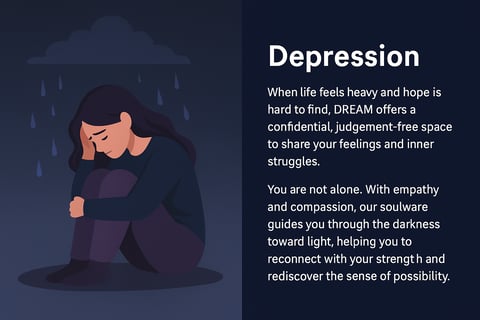Level 2 - Cognitive Behavior Therapy
Left 2 - Cognitive Behavioral Therapy
For deeper transformation, this Level 2 list breaks down and expands upon the foundational concepts. These techniques provide greater specificity and application.
Cognitive Restructuring & Thought Management (1-20)
Differentiate facts vs. interpretations.
Practice self-compassion in internal dialogue.
Identify and replace self-limiting beliefs.
Use Socratic questioning to challenge irrational thoughts.
Apply the double-standard method (treat yourself as kindly as you would a friend).
Recognize the role of core beliefs in emotional responses.
Use positive affirmations to replace negative self-talk.
Label emotions objectively rather than catastrophizing.
Identify triggers for negative thoughts.
Reframe past mistakes as growth experiences.
Exposure, Behavior, and Habit Formation (21-40)
Break large challenges into smaller, doable steps.
Face fears through systematic desensitization.
Use graded exposure to handle anxiety.
Experiment with behavior modification for habit change.
Engage in opposite action (e.g., if feeling withdrawn, actively seek social engagement).
Use implementation intentions ("If X happens, then I will Y").
Reward positive behaviors to reinforce growth.
Develop coping cards with counterarguments to negative thoughts.
Challenge avoidance by gradually increasing engagement.
Use anchoring techniques to establish new habits.
Emotional Processing & Regulation (41-60)
Learn distress tolerance skills.
Identify early warning signs of emotional spirals.
Cultivate mindful self-awareness.
Use diaphragmatic breathing for anxiety relief.
Engage in progressive muscle relaxation (PMR).
Use opposite emotion activation (e.g., engage in laughter when feeling sad).
Develop "wise mind" thinking (balancing logic and emotions).
Separate emotion from identity (e.g., "I feel sad" vs. "I am a sad person").
Recognize avoidance behaviors and challenge them.
Practice self-validation and self-soothing techniques.
Behavioral Experimentation & Problem-Solving (61-80)
Track patterns in problem-solving success.
Conduct "what-if" scenario evaluations.
Experiment with new coping strategies weekly.
Test assumptions through role-playing exercises.
Use thought-stopping techniques for ruminations.
Examine cause-and-effect relationships in behavior.
Use mind-mapping for complex problems.
Utilize journaling to process difficult events.
Write letters to oneself for self-reflection.
Develop personal coping statements.
Visualize successful coping responses.
Challenge predictions of failure.
Log emotional changes before and after CBT techniques.
Experiment with social confidence-building exercises.
Use graded task assignments for motivation.
Practice assertiveness training.
Develop flexibility in perspective-taking.
Use reframing techniques for difficult situations.
Apply humor therapy to shift emotional states.
Develop a "toolbox" of go-to coping strategies.
Self-Reflection, Growth, and Long-Term Change (81-100)
Identify personal values and align goals accordingly.
Track long-term progress with quarterly reflections.
Integrate CBT with lifestyle changes (e.g., exercise, diet, sleep).
Address procrastination with action-focused thinking.
Engage in meta-cognition (thinking about thinking).
Cultivate gratitude practices.
Develop daily reflection prompts for self-awareness.
Strengthen self-trust through consistent action.
Learn to detach from past failures.
Establish healthy routines that reinforce positive habits.
Implement relaxation techniques before stressful situations.
Recognize when to seek professional help.
Develop a "mindfulness anchor" for grounding in stressful moments.
Use positive visualization before challenges.
Track how emotions fluctuate over weeks/months.
Reinforce self-worth by listing past achievements.
Reduce perfectionism through "good enough" thinking.
Develop "future self" empathy (consider how actions today impact future well-being).
Train your inner dialogue to be more supportive.
Build self-compassion as a core practice.
81-100. (Customizable for personal growth area)
Conclusion:
The Top 10 CBT principles offer a structured, accessible foundation, while Level 2 expands into 100 targeted techniques for deeper change. These methods, when practiced consistently, can retrain thinking, regulate emotions, and empower long-term transformation.


© 2025. DREAMHEALER.ORG All rights reserved.
